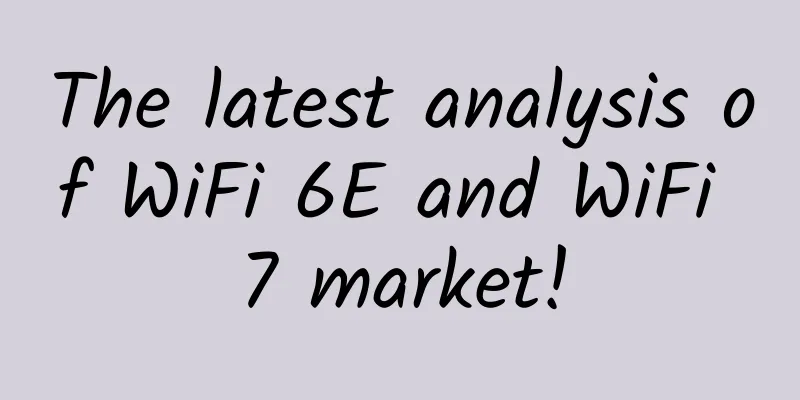What are the pros and cons of 5G?

|
Enterprises are evaluating 5G and its impact on operations. Before reaping the benefits, enterprises must consider the pros and cons of 5G. Carriers continue to target consumers with 5G services, but businesses are expected to reap the greatest benefits from the cellular standard. Still, faster wireless connections don't come without a cost. Many businesses may have to retool their infrastructure to take advantage of 5G's performance. Let's take a look at the pros and cons of 5G networks. What is 5G technology?5G is the fifth generation of technology supporting cellular communications, offering faster speeds, lower latency and a more unified experience compared to 4G. It is expected to usher in a host of new high-speed services, including those based on machine learning and artificial intelligence, redefining how businesses and consumers use the wireless spectrum to communicate and conduct business. What are the advantages of 5G?1. SpeedWith theoretical speeds of up to 20 Gbps, 5G delivers data rates orders of magnitude higher than 4G and 4G LTE. The actual speeds that enterprise customers are able to use from their 5G provider depend on a variety of factors, including distance from the tower, the technical sophistication of the carrier itself, and whether the network components are carefully designed to support multi-gigabit performance. That said, 5G enables businesses to use services that older standards could not provide, such as automation and advanced video conferencing capabilities. 5G not only offers higher speeds, but also something equally important: low latency. 2. Low latencyCompared to 4G, 5G significantly reduces the time it takes network equipment to respond to commands. With 4G, latency ranged from about 60 milliseconds to 98 milliseconds. 5G will reduce latency to less than 5 milliseconds, but the ultimate goal, according to standards body the 3rd Generation Partnership Project, is below 2 milliseconds. With latency so low, the delays that plague real-time communications are all but eliminated. As a result, this new generation of wireless service should work the same way regardless of location. Improving latency is also a core component of standalone 5G, and carriers are continuing to test the feature. 3. Capacity5G supports more devices connecting simultaneously than 4G—up to 10 times more per square kilometer, according to one estimate. As a result, enterprises no longer need to evaluate their cellular and Wi-Fi wireless strategies as an either-or proposition. With 5G, enterprises can switch between cellular and Wi-Fi connections as needed without worrying about performance being affected or mobile broadband access being limited, especially in high-speed network congested environments, such as some major urban areas. 5G's additional capacity is driving dramatic growth in the Internet of Things, as enterprises can deploy more connected devices to monitor systems and perform other operations. 4. Advanced technical support5G is driving the emergence of a new generation of interactive services based on artificial intelligence and machine learning. For example, high-speed video conferencing with augmented reality or virtual reality capabilities can simulate environments and help employees make better decisions about projects. Automation enables companies to rely on applications and services that are more responsive and predictive than traditional measures. 5. Network Reconstruction5G could inspire leading enterprises to reimagine their networks, adding automation and other capabilities as needed. Branch offices could use 5G as the primary connection medium, relying on multiple carriers to deliver internet services through physical or virtual SIM cards. Private 5G networks, meanwhile, give enterprises the opportunity to run their own limited-access networks over which they can offer specialized services and applications. Edge computing should become more common, as 5G-compatible components can quickly process and respond to requests, reducing the need for backhaul to data centers. What are the downsides of 5G?1. Security5G's transport security algorithms are more comprehensive than those supported by the 4G standard, but enterprises may still encounter other cybersecurity issues. Although applications transmitted over 5G networks may be encrypted, the standard itself lacks end-to-end encryption, and the lack of encryption early in the connection process could leave enterprises vulnerable to attack. The number of IoT devices and components connected to 5G networks greatly increases the threat to enterprises as attackers try to exploit vulnerabilities. Another potential downside of 5G: 5G devices themselves may cause concern because the chips and other components that drive these devices could be infected with malware by nation-state actors. Enterprises also need to carefully weigh the use of network slicing in 5G networks, such as creating virtual networks to host dedicated applications or services. 5G management software is vulnerable to attack; vulnerabilities in any part of the operator or enterprise infrastructure could cause serious security issues throughout the network. 2. Cost expenditure/operating expenditureTo fully reap the benefits of 5G, businesses must upgrade and replace network components with processors designed to support the higher speeds and performance metrics of the standard. Even when 5G-compatible devices are available, businesses must still find ways to maximize their 5G investments when a large amount of network infrastructure is combined with legacy equipment. Price is a key consideration due to the ever-changing pricing of operators and equipment. 3. Uneven coverageOperators have accelerated the deployment of 5G, in part by acquiring spectrum that allows for different transmission schemes other than millimeter wave (mmWave). However, many areas will not have true 5G coverage for years. Businesses with offices in rural areas may be particularly vulnerable to 5G coverage gaps and must rely on a combination of legacy connectivity technologies. As a result, businesses without access to 5G, or forced to wait a long time for operators to offer 5G services in their area, may suffer in the competitive landscape. 4. Line of sight/penetration issuesOrdinary objects can easily block millimeter wave's high-frequency signals, so ensuring consistent coverage throughout office and factory environments can be a problem. As a result, companies may have to redesign some facilities to guarantee adequate service or use mid-band or low-band 5G capabilities to expand coverage. Another option, primarily for private 5G networks, is the Citizens Broadband Radio Service spectrum. 5. Promotional factorsOperator and vendor claims, including how quickly users can download movies on mobile devices, can overwhelm enterprises when evaluating 5G. Enterprises need to take the time to fully understand how they intend to use 5G to get the most from the technology and how to justify the required return on investment. 5G is different from other technologies that were initially driven by enterprises and then adopted by consumers. In the case of 5G, the opposite is true. Until more 5G-compatible devices and mobile phones become common, 5G-specific applications and services are developed, and true 5G connectivity is reliable and ubiquitous, widespread enterprise adoption will be inhibited. |
<<: Analysis: Advantages and limitations of wireless data centers
>>: Learn Python network programming from scratch: Explore TCP protocol and example demonstrations!
Recommend
The past and present of IPv6 and the comparison with IPv4
IPv6 is the abbreviation of Internet Protocol Ver...
Guanmai Technology CTO Miao Quan: Steadily enter the SD-WAN market and be prepared to deploy 5G
[51CTO.com original article] From the emergence t...
5G is coming, will you still port your number to another network?
According to the unified deployment of the Minist...
HawkHost: $5/month-1GB/30G SSD/2TB/Singapore, Hong Kong, Los Angeles and other data centers
When we talk about HawkHost, the first thing that...
HostXen Double 11 recharge 300 yuan to get 50 yuan / recharge 500 yuan to get 100 yuan / recharge 1000 yuan to get 10% off the whole site, Hong Kong 2G memory VPS monthly payment starts from 50 yuan
HostXen is a DIY cloud hosting platform that star...
What will the university of the future look like? The informatization construction of colleges and universities has given birth to a new university model
[51CTO.com original article] In late summer 2017,...
Interrupt or poll? It's so troublesome to get a data packet!
New employees in the network department My name i...
Mini Program Dependency Analysis Practice
[[350074]] Students who have used webpack must kn...
What to do if you forget your router password? Do it yourself without asking for help
Now we are in the Internet age, the Internet make...
5G is here. How to build the emerging edge DCs?
[[285118]] What does the data center and computer...
Tencent Cloud Flash Sale: Cloud Server from 74 yuan/year, 1C2G6M for three years from only 219 yuan
Competition among domestic cloud server vendors i...
What is Wi-Fi 7, how will it enhance connectivity, and which devices will be available?
Wi-Fi 7 is the latest generation and will be stan...
5G industry terminals are launched! 519 5G terminals, 303 of which are commercially available
[[387356]] For the development of each generation...
China has 1 million 5G base stations. Why should 5G investment be moderately ahead of time?
I believe that many people are excited about 5G n...
Cisco CEO: 5G will bring unexpected benefits to Cisco
[[278077]] Cisco is primarily known for its switc...









